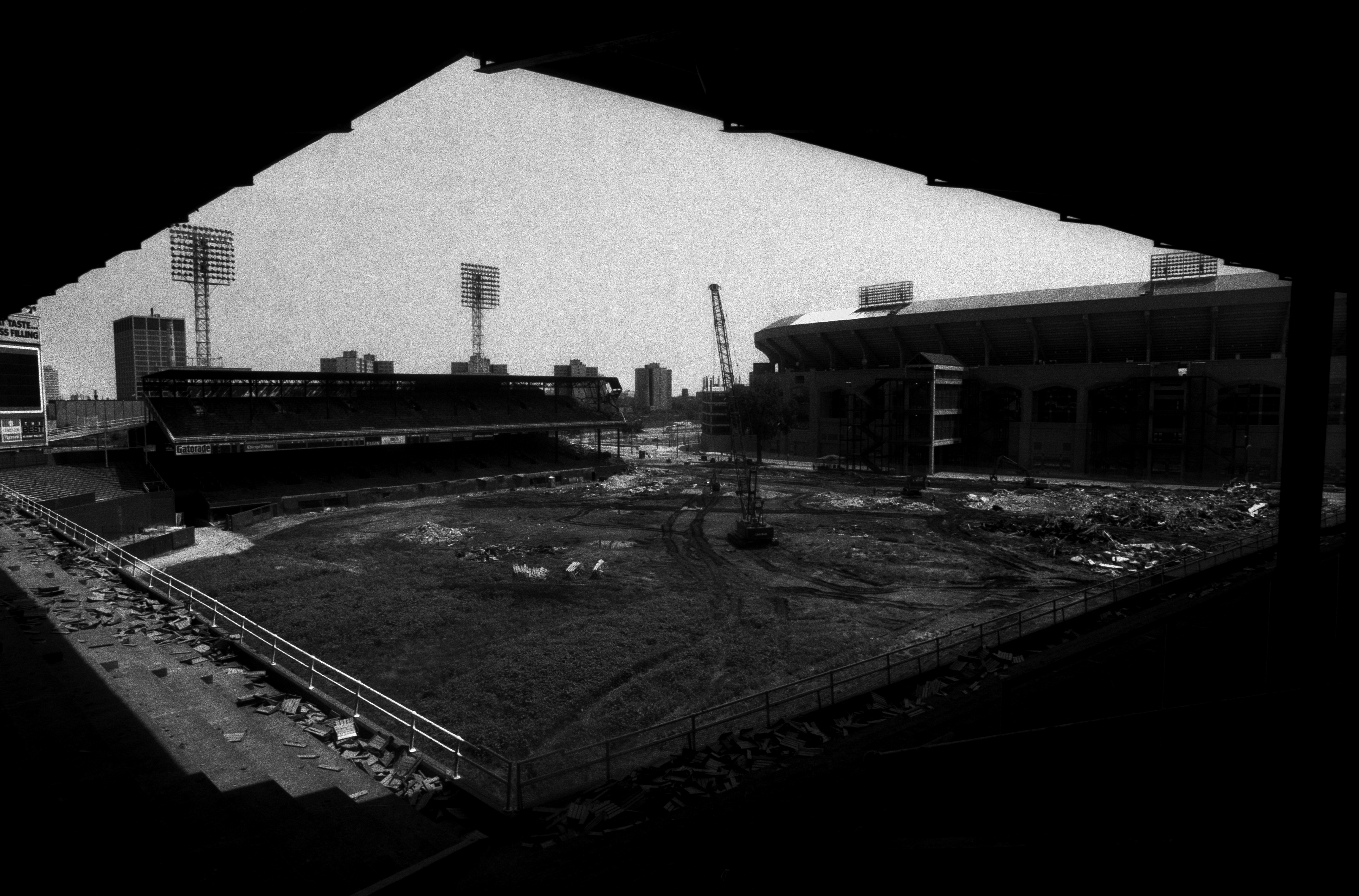White Sox fans are gearing up for a season with new eats and new rules ahead of the home opener April 3.
And before first pitch fans can check out a new three-part documentary on Comiskey Park, which closed after the 1990 season.
Last Comiskey features interviews from former White Sox players, beer vendors, executives, fans and security guards to give a sense of what it felt like to be at Comiskey Park during its final season. The film also intersperses those interviews with actual sound from the ballpark.
“I was trying to capture that [atmosphere] to bring it back for people who remember it so well, but also for those who never get the chance to go to a game and that classical ballyard,” Matt Flesch, producer and director of the docuseries, recently told WBEZ’s Reset. “It’s a way to go back in time and kind of see what baseball was like.”

The final part of the docuseries, which came out this month, focused on what made the physical ballpark special. The film examines how the structure was built like a theater so fans could be close to the players on the field.
Flesch contrasts the design to modern stadiums, including Guaranteed Rate Field, where the upper deck is pushed further away from the field.
“It takes the fans a little bit away and it’s not the same,” he said.
One of the people Last Comiskey features is former stadium organist Nancy Faust, who created many of the songs associated with baseball, including "Na Na Hey Hey Kiss Him Goodbye" — which she played when a visiting pitcher was removed from the game.
Faust also invented what would become walk-up songs, music that fits a specific batter. She first did this when she played “Jesus Christ Superstar” for Dick Allen — “a famous White Sox player who really kind of saved the team in 1972,” Flesch said.
Also making the 1990 season special was how the Sox defied expectations and made a run for first place.
“All of a sudden, it kind of turned to this extreme excitement about this young team that just came out of nowhere, was playing so well … it almost feels like there was something in the air, like the ghosts of Comiskey Park were saying, ‘Hey, we’re gonna have one last good season for this whole ballyard,’ ” Flesch said.
In the end, the Sox finished 94-68.
Last Comiskey started as a pandemic project for Flesch and his brother Mike after they watched The Last Dance — which follows Michael Jordan and the 1997-98 Chicago Bulls season.
Flesch said that documentary got the pair thinking about what other great Chicago sports stories could be told. They didn’t expect their project to turn into the three-year production it became.
“When we first started, we thought we would just make a few short narrated segments using some old footage,” Flesch said. “We didn’t even think to interview actual players and people from around the park.”

After putting some narrated videos on YouTube, the brothers got a positive response from Faust, who gave them home video from Comiskey Park and suggested other interview subjects for the documentary.
Flesch, who played baseball as a middle infielder growing up, was especially excited about interviewing Scott Fletcher, who played a similar position with the White Sox.
But the notable atmosphere at Comiskey Park came from more than just the sport being played.
“What we tried to have come through in this documentary is the spirit of the park and all these stories, and it’s kind of bigger than just baseball,” Flesch said. “It’s where you spend time with family and friends and keep going back there and it means more than just the game on the field.”
Watch Last Comiskey here.

Bianca Cseke is a digital producer at WBEZ. Follow her @biancacseke1.



